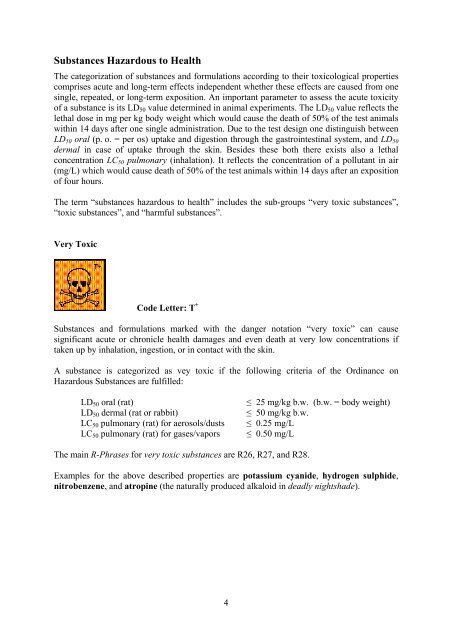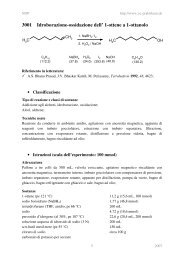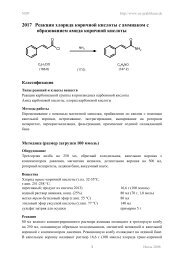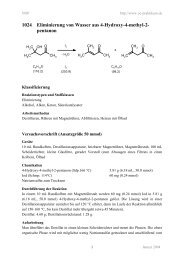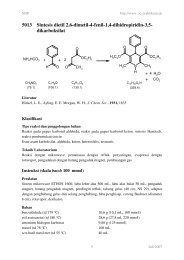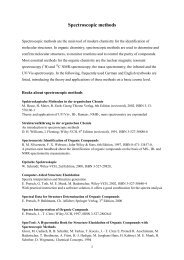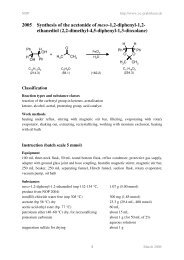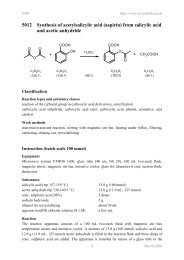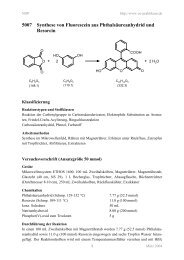Danger Symbols - kriemhild
Danger Symbols - kriemhild
Danger Symbols - kriemhild
You also want an ePaper? Increase the reach of your titles
YUMPU automatically turns print PDFs into web optimized ePapers that Google loves.
Substances Hazardous to Health<br />
The categorization of substances and formulations according to their toxicological properties<br />
comprises acute and long-term effects independent whether these effects are caused from one<br />
single, repeated, or long-term exposition. An important parameter to assess the acute toxicity<br />
of a substance is its LD50 value determined in animal experiments. The LD50 value reflects the<br />
lethal dose in mg per kg body weight which would cause the death of 50% of the test animals<br />
within 14 days after one single administration. Due to the test design one distinguish between<br />
LD50 oral (p. o. = per os) uptake and digestion through the gastrointestinal system, and LD50<br />
dermal in case of uptake through the skin. Besides these both there exists also a lethal<br />
concentration LC50 pulmonary (inhalation). It reflects the concentration of a pollutant in air<br />
(mg/L) which would cause death of 50% of the test animals within 14 days after an exposition<br />
of four hours.<br />
The term “substances hazardous to health” includes the sub-groups “very toxic substances”,<br />
“toxic substances”, and “harmful substances”.<br />
Very Toxic<br />
Code Letter: T +<br />
Substances and formulations marked with the danger notation “very toxic” can cause<br />
significant acute or chronicle health damages and even death at very low concentrations if<br />
taken up by inhalation, ingestion, or in contact with the skin.<br />
A substance is categorized as vey toxic if the following criteria of the Ordinance on<br />
Hazardous Substances are fulfilled:<br />
LD50 oral (rat) ≤ 25 mg/kg b.w. (b.w. = body weight)<br />
LD50 dermal (rat or rabbit) ≤ 50 mg/kg b.w.<br />
LC50 pulmonary (rat) for aerosols/dusts ≤ 0.25 mg/L<br />
LC50 pulmonary (rat) for gases/vapors ≤ 0.50 mg/L<br />
The main R-Phrases for very toxic substances are R26, R27, and R28.<br />
Examples for the above described properties are potassium cyanide, hydrogen sulphide,<br />
nitrobenzene, and atropine (the naturally produced alkaloid in deadly nightshade).<br />
4


